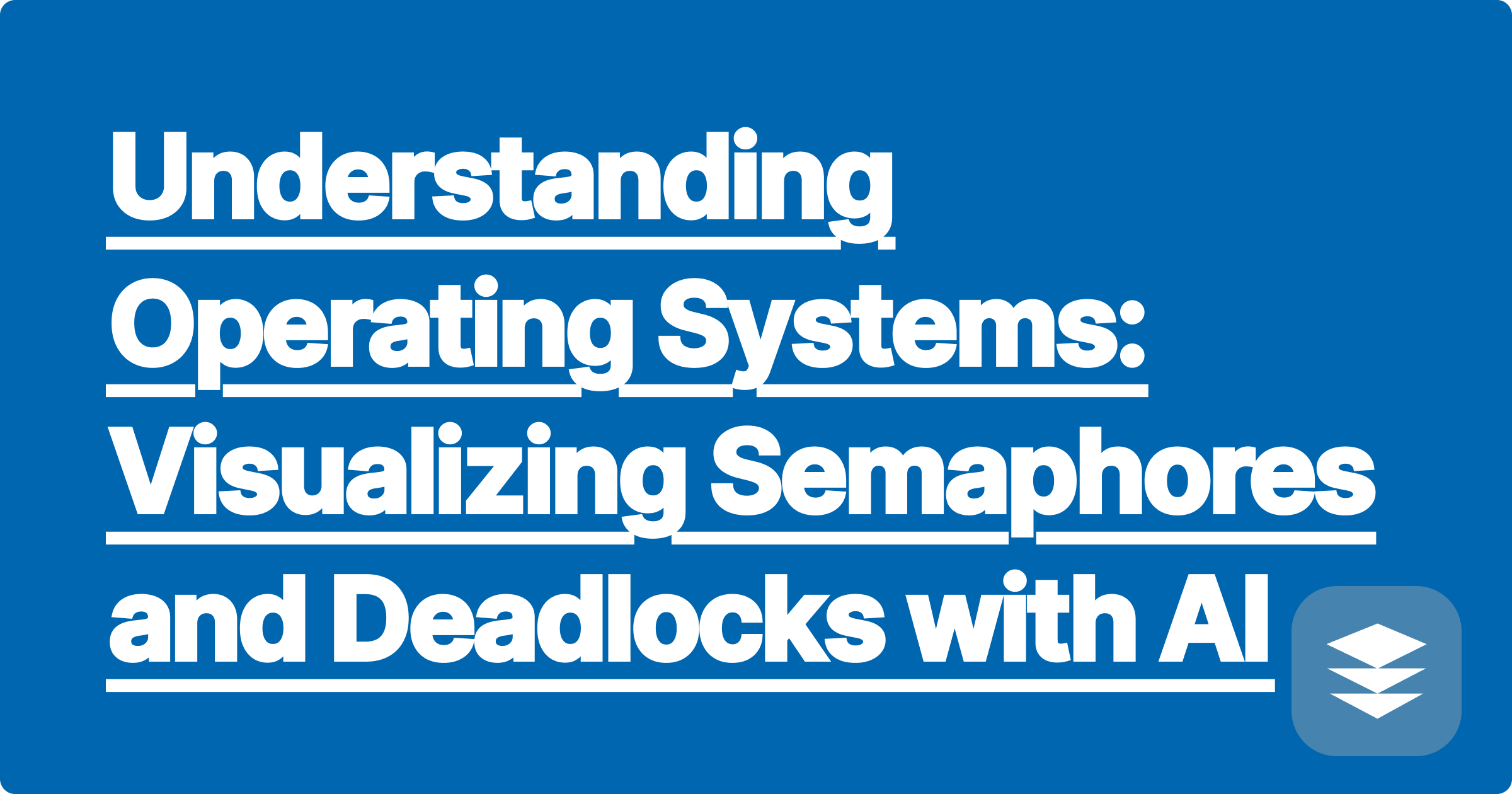
Welcome to your Operating Systems course, where the neat, predictable world of single-threaded programs gives way to the managed chaos of concurrent processes. This is where you encounter some of the most powerful—and most confusing—concepts in computer science: semaphores, mutexes, and the dreaded deadlock.
These are not concepts you can easily understand by reading text alone. They are dynamic processes involving timing, resource competition, and state changes. To truly grasp them, you need to see them in action. But how do you visualize something that's happening invisibly inside a computer's kernel?
This is where an AI-powered tool like GPAI Cheatsheet becomes invaluable. It can take the abstract theory of concurrency and help you visualize deadlock and other operating systems concepts explained in a clear, intuitive way.
The core challenge of OS concurrency is that it's about interactions over time.
A tool like GPAI Cheatsheet can act as your personal concept illustrator. By feeding it your lecture notes or textbook chapters, you can prompt it to generate visual aids that bring these ideas to life.
This visualize deadlock ai capability turns a complex scenario into a simple, easy-to-understand picture.
The AI can also translate theoretical rules into concrete, step-by-step scenarios. For semaphores, you can ask:
"Show a step-by-step timeline of two processes interacting with a semaphore that has an initial value of 1."
The AI can generate a table or a list that illustrates the sequence:
This turns a set of rules into a story you can actually follow.
The best way to study for your OS exam is to combine these elements. Use the GPAI Cheatsheet builder to create a master document. For each concurrency concept (e.g., "Deadlock"), create a section that includes:
This creates a comprehensive, multi-modal study guide that is far more effective than text-only notes.
Operating Systems is a fascinating subject that governs how all modern software works. Don't let its abstract nature intimidate you. By using AI to visualize the invisible interactions of concurrent processes, you can gain the deep, intuitive understanding needed to ace your course and build a strong foundation for your future in software engineering.
[Struggling with OS concepts? Try GPAI Cheatsheet today. Upload your lecture notes and let the AI generate the diagrams and explanations you need to succeed. Sign up now for 100 free credits.]
Why Your CS Degree is 50% Theory: How to Bridge the Gap with AI
Debugging in Your Head vs. AI: A Smarter Way to Find Bugs
From Pseudocode to Python: How AI Can Translate Your Professor's Logic
Ace Your Technical Interview: Using GPAI to Practice DSA Whiteboarding
Understanding Operating Systems: Visualizing Semaphores and Deadlocks with AI
Your Personal AI Teaching Assistant for Machine Learning Concepts
How to Document Your Code Instantly with an AI Comment Generator
The Best Way to Learn Computer Networking: From OSI Model to Packet Tracing
Database Design Made Easy: How AI Can Help You with ER Diagrams and SQL
Surviving Your Software Engineering Group Project with AI-Powered Tools